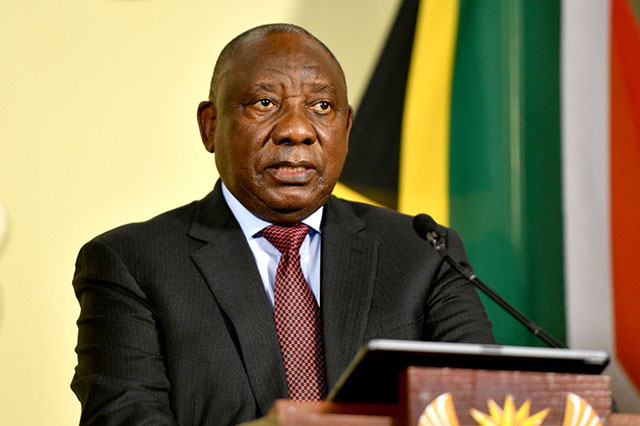Johannesburg – South Africa will open up to private investments to establish a competitive electricity market, President Cyril Ramaphosa said on Monday, as he outlined sweeping plans to deal with a prolonged energy crisis.
Ramaphosa said the government will accelerate the procurement of new capacity from renewables, gas and battery storage – and remove a licensing threshold for private power generation projects.
“This will enable private investment in electricity generation to rise to higher levels,” he added.
The ultimate objective “is to achieve long-term energy security, so that we never have to experience an electricity shortage again”, Ramaphosa said in a televised press briefing.
“We aim to do this by … improving plant performance, establishing a competitive electricity market, opening the way for private investment in new generation capacity and increasing our investment in renewables.”
ALSO READ | Eskom asks for 32.66% power price hike amid ongoing load shedding
Power cuts are a major source of frustration in the country and Ramaphosa has been under pressure to address blackouts that have been costing Africa’s most industrialised economy millions of dollars a day.
Ramaphosa said beleaguered public utility firm Eskom, which generates more than 90% of the country’s energy will increase the budget for critical maintenance and add new capacity to the grid “on an urgent basis”.
This will include buying energy from mines, paper mills, shopping centres and other private entities that have their own generators, as well as from neighbouring countries such as Botswana and Zambia, he said.
Scheduled blackouts, known locally as load shedding, have burdened the country for years – as Eskom failed to keep pace with demand – but recently reached new extremes.
This month, the country endured almost two weeks of stage-6 load shedding, which entails multiple power cuts a day, each lasting between two and four hours.
Labour disputes have compounded pre-existing issues at the state-run firm that is plagued by a history of alleged mismanagement.
Green bet
“We must join in a massive rollout of rooftop solar” Ramaphosa said, adding Eskom would develop a pricing structure to allow the private sector to sell surplus power to the company.
The country currently derives around 80 percent of its electricity from coal.
“South Africa has great abundance of sun which we should use to generate electricity,” Ramaphosa said.
South Africa will use $8.5 billion (7.3 billion euros) in loans and grants secured last year from a group of rich nations to finance migration away from coal, to repurpose old power stations, he added.
ALSO READ | SA’s Eskom agrees pay rise for striking power workers
He also announced the treasury was working to” finalise a sustainable solution” to Eskom’s 400 million-rand ($24 million) debt, and new laws to tackle legal and regulatory obstacles to new generation capacity.
“These changes will radically transform the structure of the electricity sector for future generations,” Ramaphosa said.
While the grid will remain state-owned “more generators, both private and state-owned” will compete on an equal footing, he added.
The opposition Democratic Alliance party welcomed the move saying that it was however “unacceptable that it took this long”.
“The President will have our support in the implementation of the energy plan as long as he remains committed to transparent and accountable implementation of the plan with the urgency required,” the party said in a statement.
Follow African Insider on Facebook, Twitter and Instagram
Source: AFP
Picture: Twitter/@GovernmentZA
For more African news, visit Africaninsider.com


